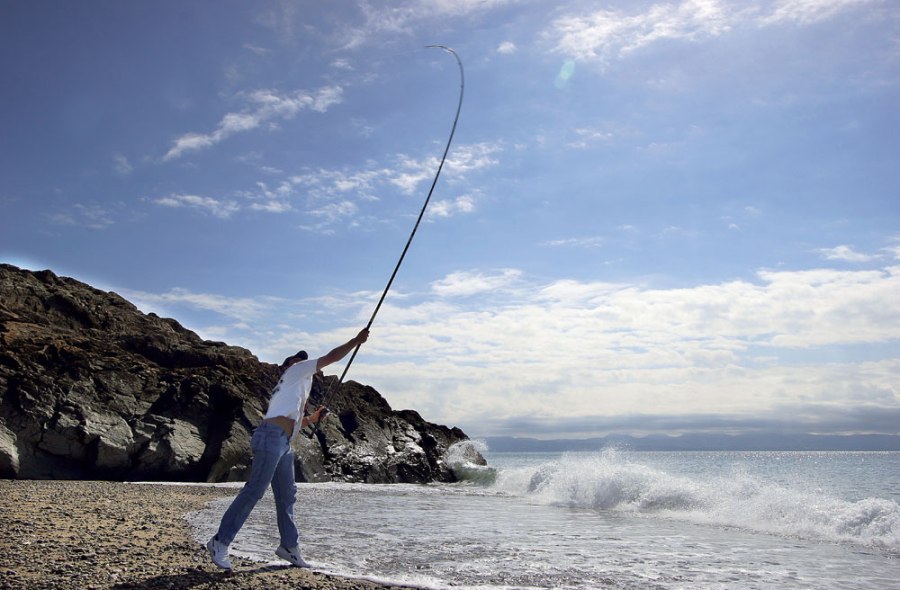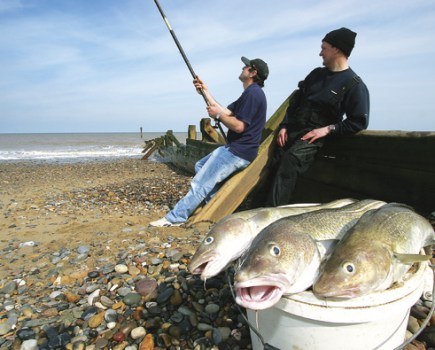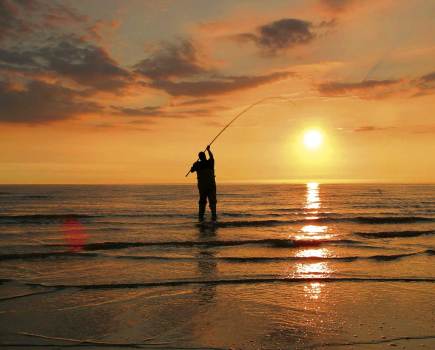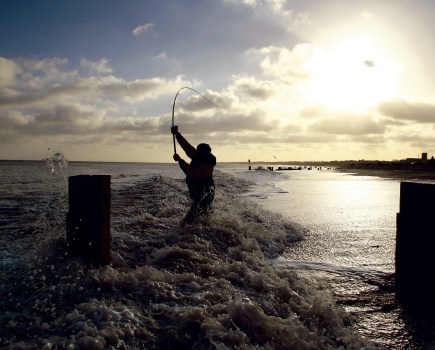The Welsh must love it. Stick five consecutive consonants in front of an Englishman and watch him sweat.
“Pwelly” was how my father pronounced it when we holidayed in nearby Criccieth, 30 years ago and compared to some of the stabs at pronunciation that I’ve heard since (“I almost get catarrh trying to pronounce ‘Pwllheli’,” I have heard one outsider lament) he at least deserves a gold star for effort.
The correct rendition is actually ‘Purthelly’.
Get to that point and everything else about this pleasant Gwynedd town is plain sailing, as long as you can manage words like bream, tope and ray.
There is a variety of fishing from Pwllheli’s South Beach that has brought George Smith to this corner of northwest Wales time and time again for over20 years. If he usually has his matchman’s hat on when he arrives, that’s not to say it’s a mark purely for the match angler.
“It’s one of the most angler-friendly beaches in the area,” says the North Lincolnshire man, “and while it’s known as a match venue, I always go fishing there if I’m on my holidays.”
The beach is a slightly-shelving sand-and-shingle affair, where the sea runs deep at its eastern edge, marked by Gimblet Rock and shallower at the opposite end, as you move towards the golf course.
Kind to tackle and fishable at all stages of an ordinary tide, the beach also offers a variety of fishing around the year.
“The pleasure angler should be looking for rays, garfish and bream in the summer and whiting and codling in winter,” says George. “It’s also something of a dogfish nursery, though; you’ll get loads of them and there’s not much you can do about it!”
The dogfish are known to congregate particularly in the months of March, September and October.
The camber of the sea bed sees the bream, whose season is June to August, stick to the shallower water off the western half of the beach, while the deeper water off the eastern half, leading down to Gimblet Rock, plays host to rays over 10lb, the occasional tope to 30lb and the even more occasional conger in the vicinity of the Rock itself.
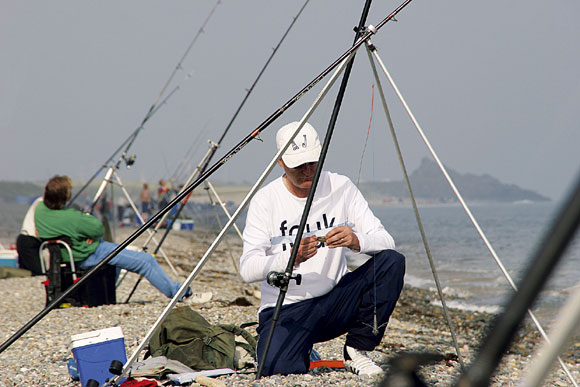
Mackerel on tap
“This is a mark that is perhaps best fished from low water to just after high,” says Smith. “You can still fish at high water, unless it’s a particularly big tide that covers the whole beach.”
He would use a cocktail of squid and lugworms or ragworms for bream and advises that while the latter average about 1lb here, you can expect to catch plenty of them if they’re about.
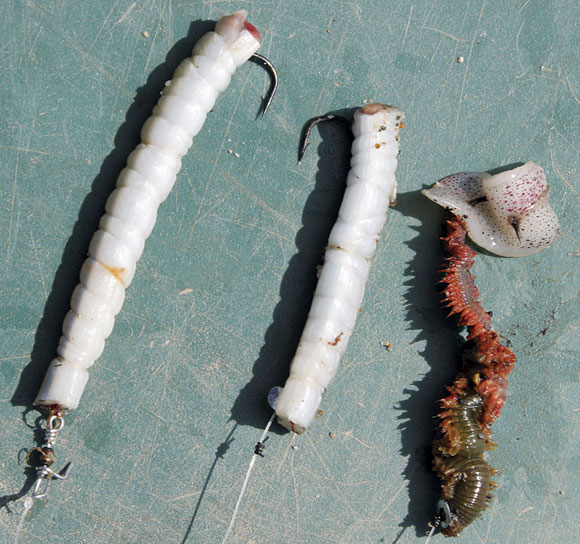
“For rays, I would use a big chunk of crab and mackerel. The fresher the mackerel the better,” he adds. Other anglers also try a frozen sandeel as an alternative.
While there is no bait to be dug from the beach, fresh mackerel need not be a problem.
On calm summer evenings, float fishing or spinning can produce mackerel from Gimblet Rock, which tends to be marked out of bounds for matches on the South Beach because of the unfair advantage it enjoys in providing access to deeper water.
Once an extensive granite plateau, the Rock has been quarried in the past to provide paving materials. What remains provides several platforms for anglers, although they can be very crowded when the mackerel and bass are in the area. The steep access to the water which the Rock offers, however, can be useful when there is a lot of weed about.
While George warns against specifically targeting tope, unless patience is one of your strong points, the Rock end of the beach is where they are most likely to be found.
Garfish, meanwhile, are everywhere and they go to 1lb, on average. Smith would use a small sliver of mackerel or a sandeel for bait, as anything white seems to attract the fish. For winter fishing, he recommends sandeel, worms and mackerel.
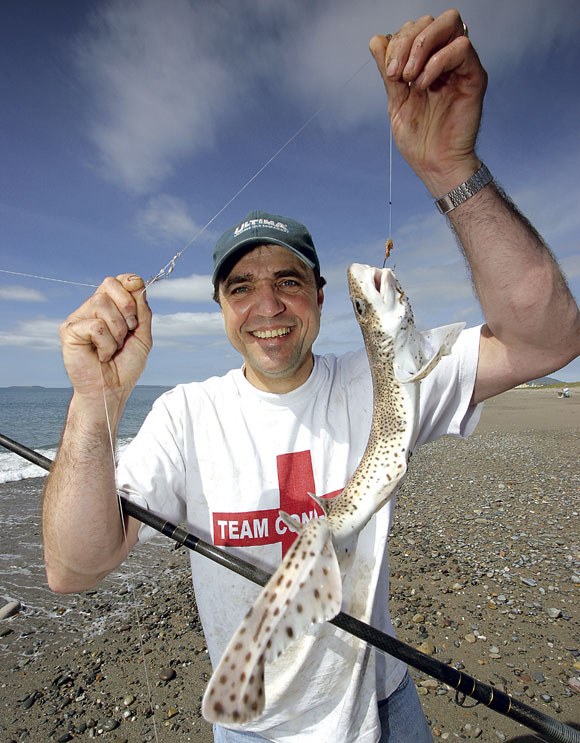
Suicide tide
He tends to fish a standard beachcaster, using three size 1 hooks clipped down to get among the dogfish in a match. For rays, he would try two baits and 1/0 hooks (size 1 if matchfishing) on an up-and-down rig with long snoods of 30-36in. “When there’s a tide on, the fish virtually hook themselves,” George explains.
When fishing for bream, he recommends size 4 short-shank Kamasan hooks and a flapping rig wherever possible or alternatively a clipped-down rig.
For garfish, in a calmer sea, he opts for float fishing with a sliding float positioned some 20ft above the hook.
“The best mainline is 15-18lb, or 20-25lb if there’s a lot of weed in the water,” he explains. “I use hooklengths of 15lb for bream, 20-25lb for dogs and rays and 10-12lb for garfish. Leads of 5-6oz should be enough.”
Generally, the weather has little effect on the fishing (although easterly winds are said to slow things down) but a bigger-than-average tide is preferred to get the fish moving and encourage a variety of catches.
“I have fished it in stormy weather and had dogfish pups washing up at my feet in the surf, but those kind of conditions do tend to bring the weed in,” says George.
“It’s not your everyday kind of weed, either; you tend to get the really thick stuff here.”
Other anglers have noted that bass to 6lb are also in evidence close in at high water after stormy weather, however, so you take your chances.
Another dilemma concerns the time you fish. George prefers daytime fishing at this venue, as he says night time is likely to find you overrun by dogfish without any compensation in improved catches of other species. In summer, however, use of the beach by holiday makers can leave you with little option but to wait for nightfall.
Bream can normally be found about 60 yards out, while rays occasionally come in that close but are more commonly found at 80yd. Winter fishing tends to happen at a minimum range of 80yd.
No stranger to shore venues that are part-fishing, part-triathlon, with a bumpy drive and a hike to negotiate before you wet a line, it’s no surprise that George’s love affair with an easily accessible mark on the other side of the country has lasted long enough for him to pronounce its name with ease. Five straight consonants? Piece of cake.
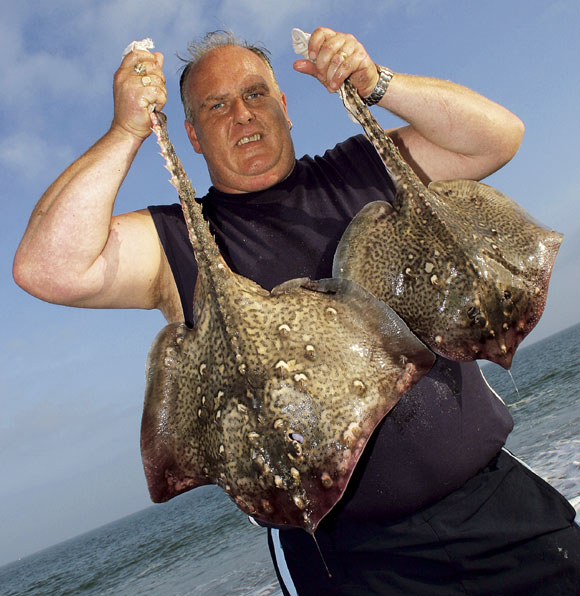
GETTING THERE
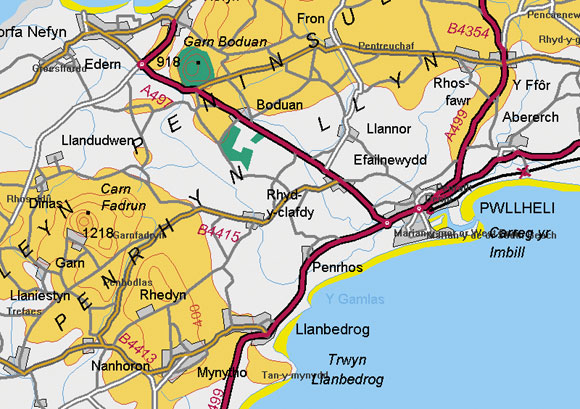
Access to the beach is through the town. Embankment Road takes you out of the town centre towards the seashore. Turning right on to The Promenade takes you towards the western end of the beach and there are parking bays along this road.
For Gimblet Rock, turn left off Embankment Road onto Bron-Y-De, which takes you through a small housing estate, where you will find a small car park on your right, opposite a boatyard.
DISABLED ANGLERS
The shingle rules the South Beach out for wheelchair users, but those disabled anglers who can walk a short way will find a walkway and handrail leading down to the beach.

